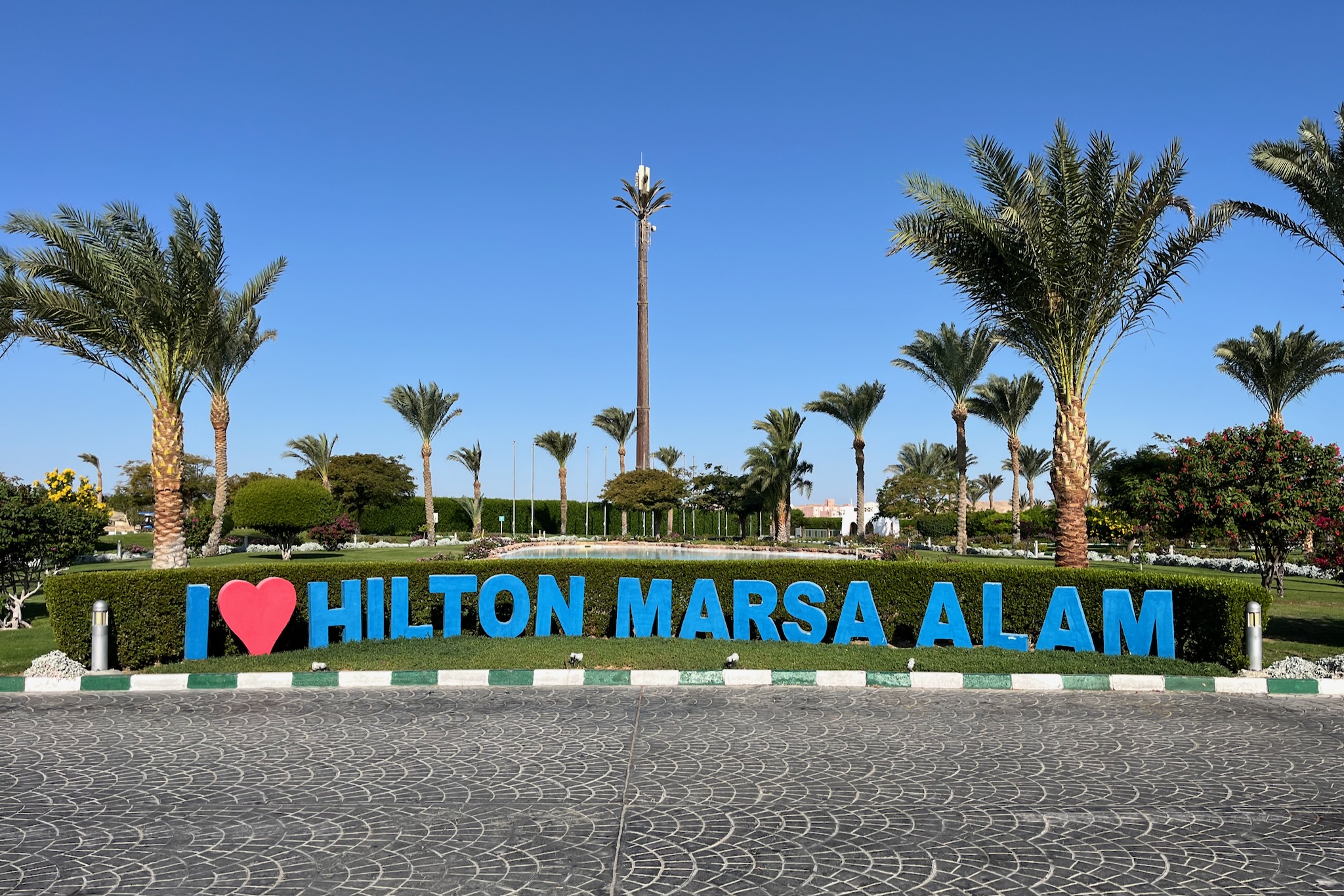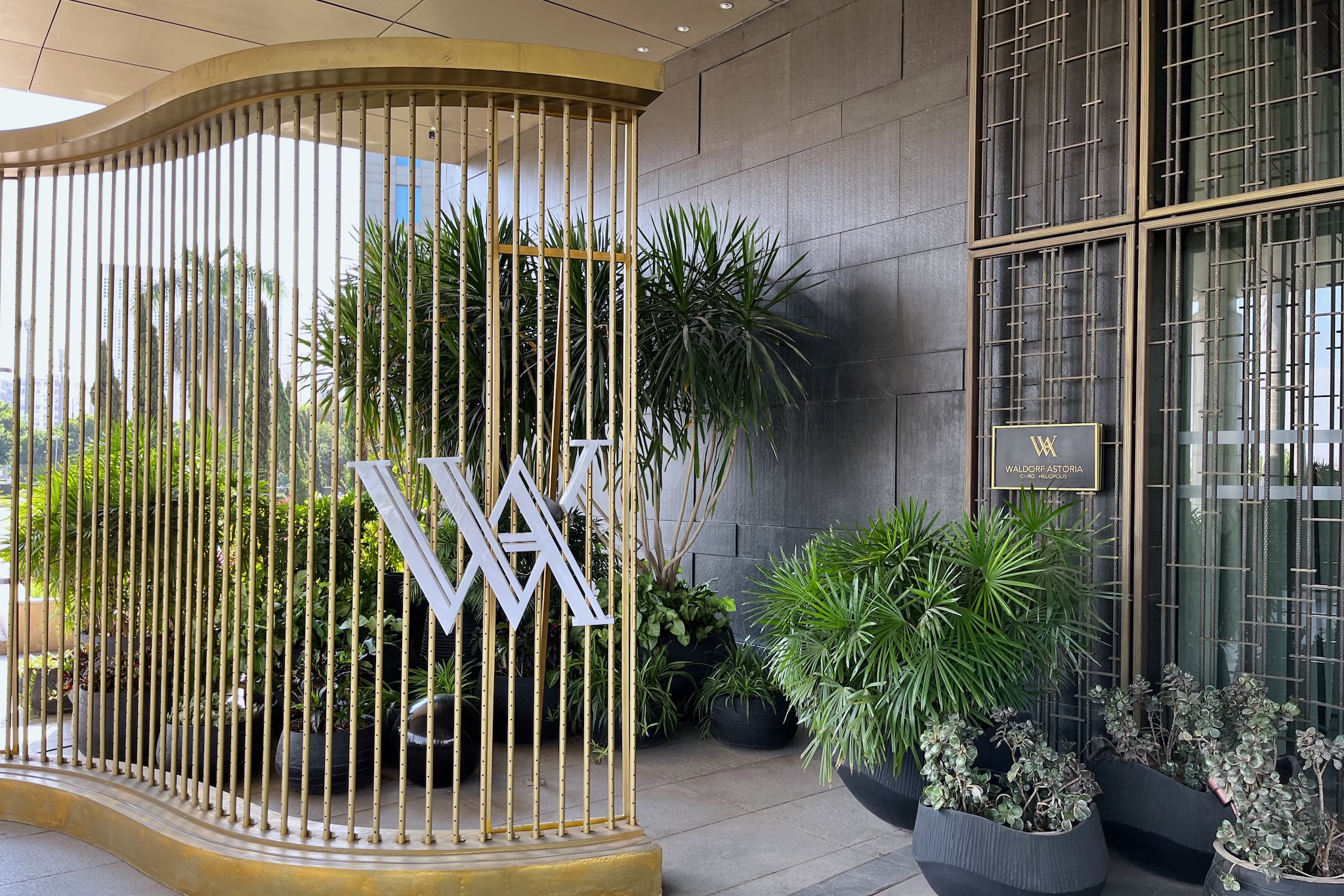The Egyptian pyramids are among the most fascinating structures in the history of mankind. While many tourists decide on guided tours, we opted for a more flexible adventure: we explored Giza, Saqqara, Dahshur and the ancient Egyptian museum at our own pace in a rental car. This allowed us to experience the magic of these historical sites away from the crowds. But how practical is such an exploration really? What challenges and highlights awaited us? We share our experiences, tips and valuable advice in this article.
While many tourists visit Egypt's pyramids with guided tours, we opted for the more flexible option and explored all the sites from our hotel, the Waldorf Astoria Cairo Heliopolis, individually with our own rental car. This decision proved to be ideal, as it allowed us to set our own pace and enjoy some quiet moments. The road conditions varied – from well-developed highways to adventurous paths through small villages – but overall the drive was easily doable.
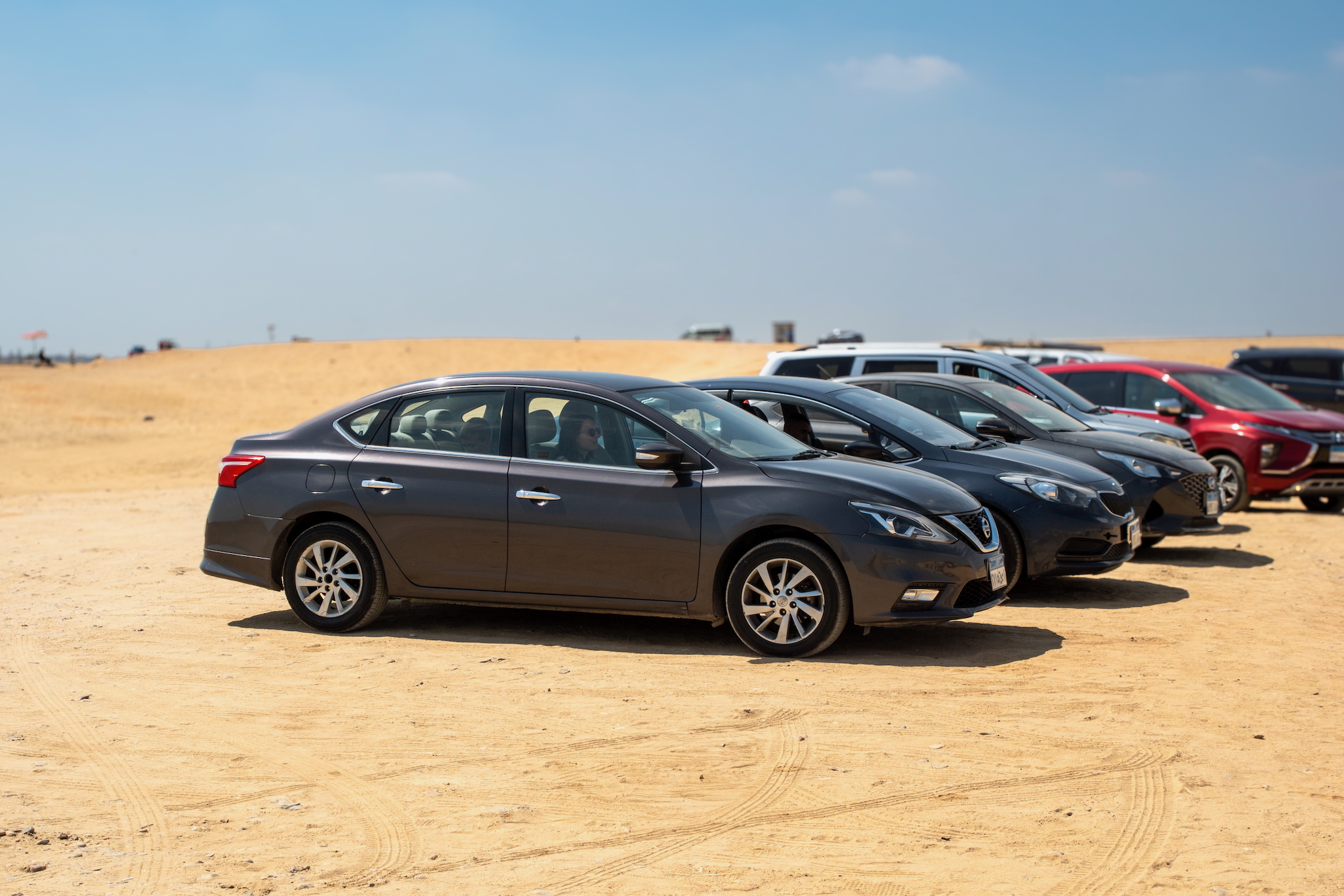
Another pleasant detail of our trip: We were able to pay conveniently by card everywhere. Whether at the ticket offices of the pyramids of Giza, Saqqara or Dahshur - cash was not absolutely necessary. Unfortunately, we had withdrawn money as a precaution - a decision that turned out to be unnecessary in hindsight. We assumed that only cash would be accepted, especially at smaller ticket offices or in remote areas.
Pyramids of Giza
Visiting the Pyramids of Giza was an absolutely impressive experience! We arrived with a rental car, because you can easily drive the entire area yourself. Don't be irritated by the many locals who want to tell you that this is not allowed – it is definitely allowed.
Our first stop was the Pyramid of Cheops. We also went inside, which was quite exciting, although it is very narrow, hot and full of steps inside. It's impressive to dive so deep into the story, but honestly, it was also exhausting. We only looked at the Chephren pyramid from the outside, and that was quite enough. Everything you see inside is pretty similar. The Mykerinos pyramid is also supposed to be accessible, but we didn't visit it there either – the external impressions were completely enough for us. At all three pyramids there are merchants who want to sell scarves, hats and small Egyptian figures. Tours with horse-drawn carriages and camels are also advertised. We found that a bit annoying, but everyone is very friendly and not too intrusive.
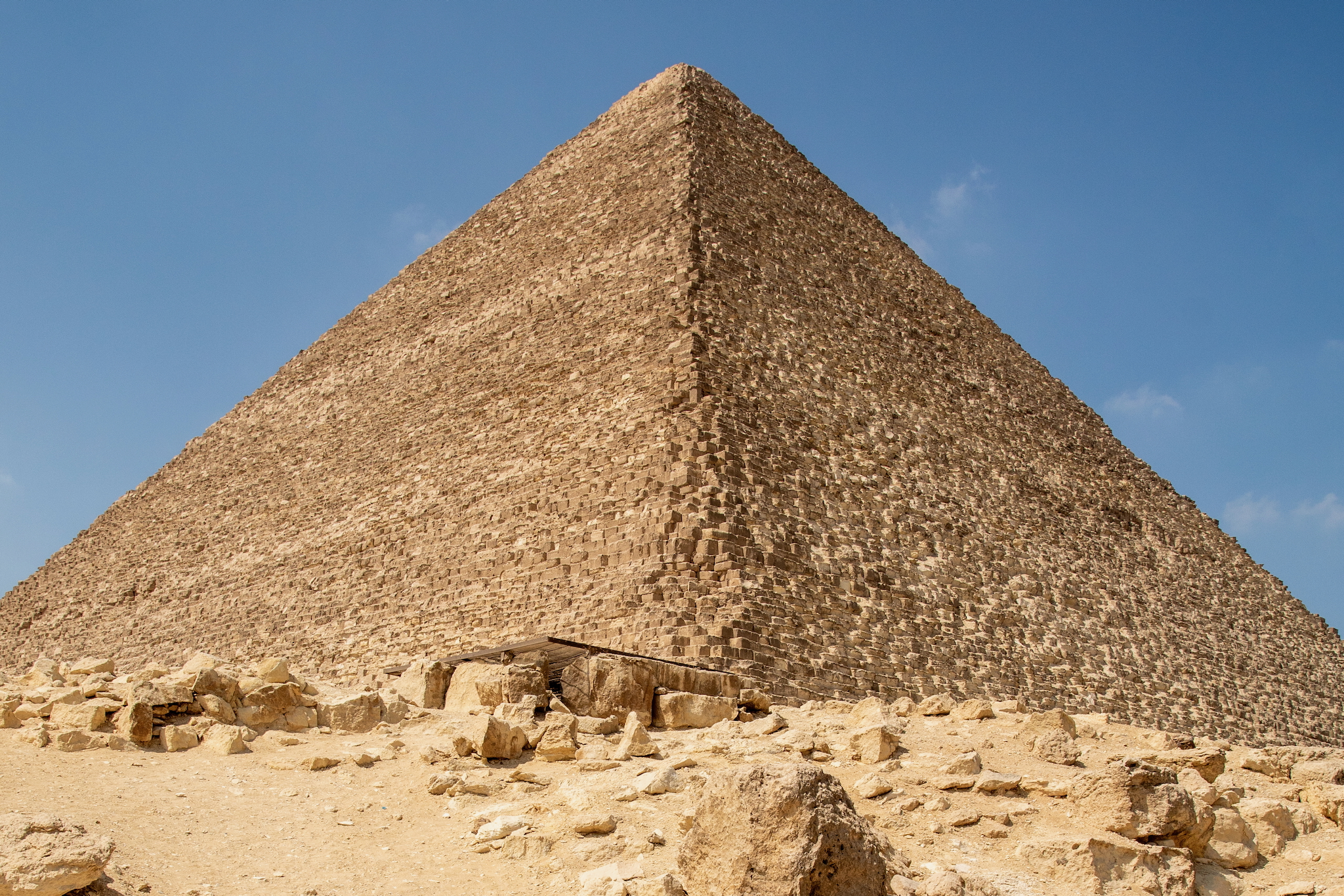
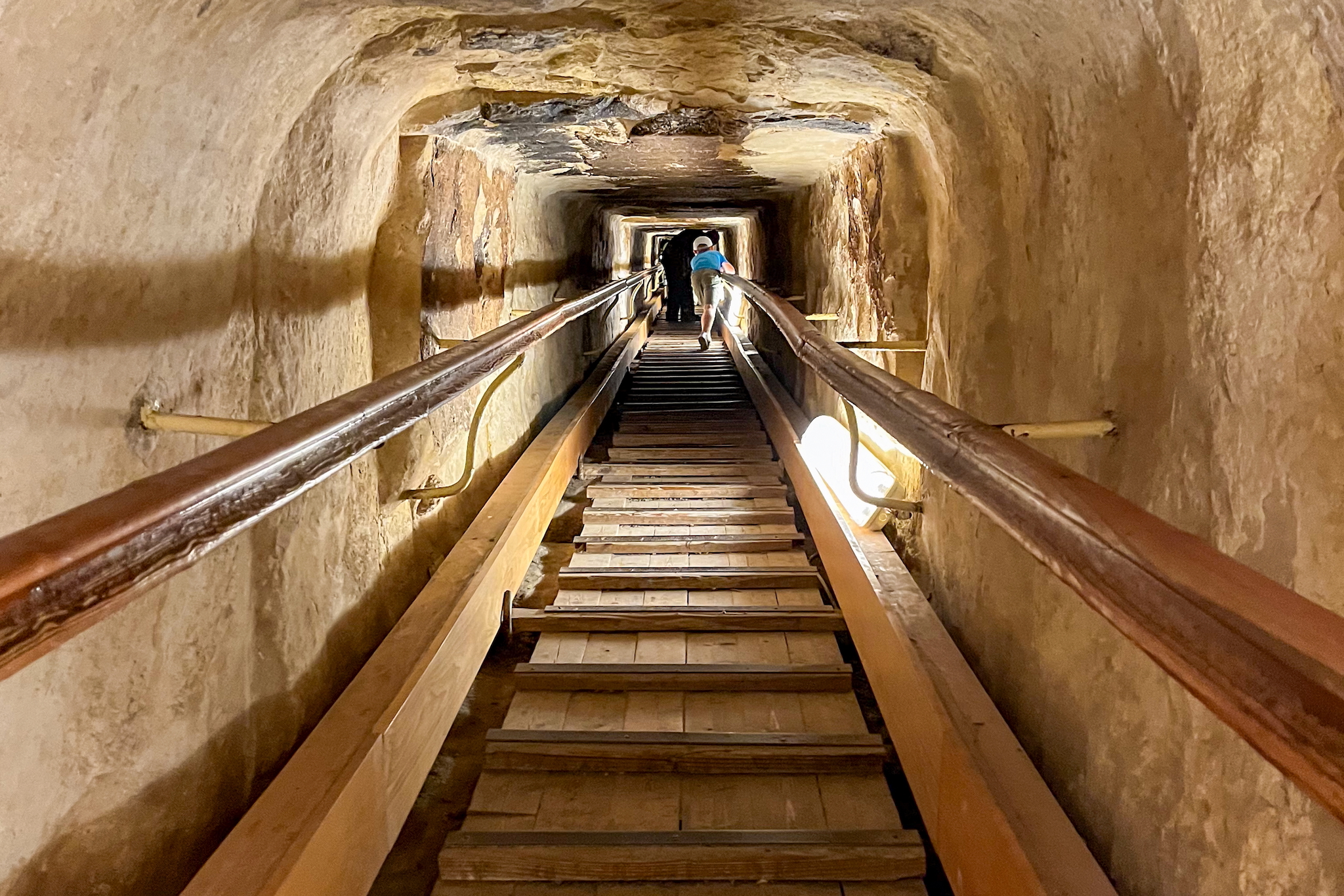
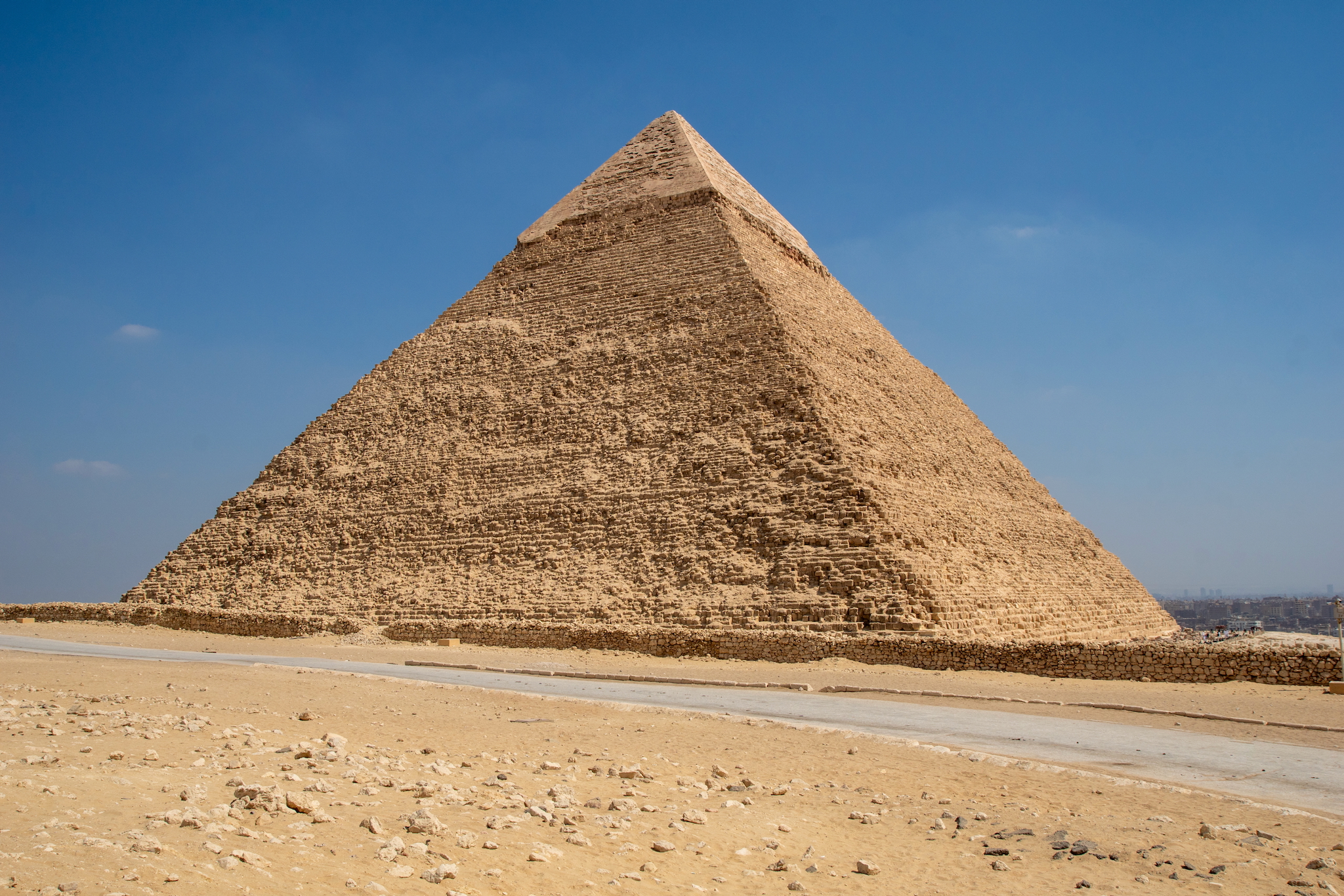
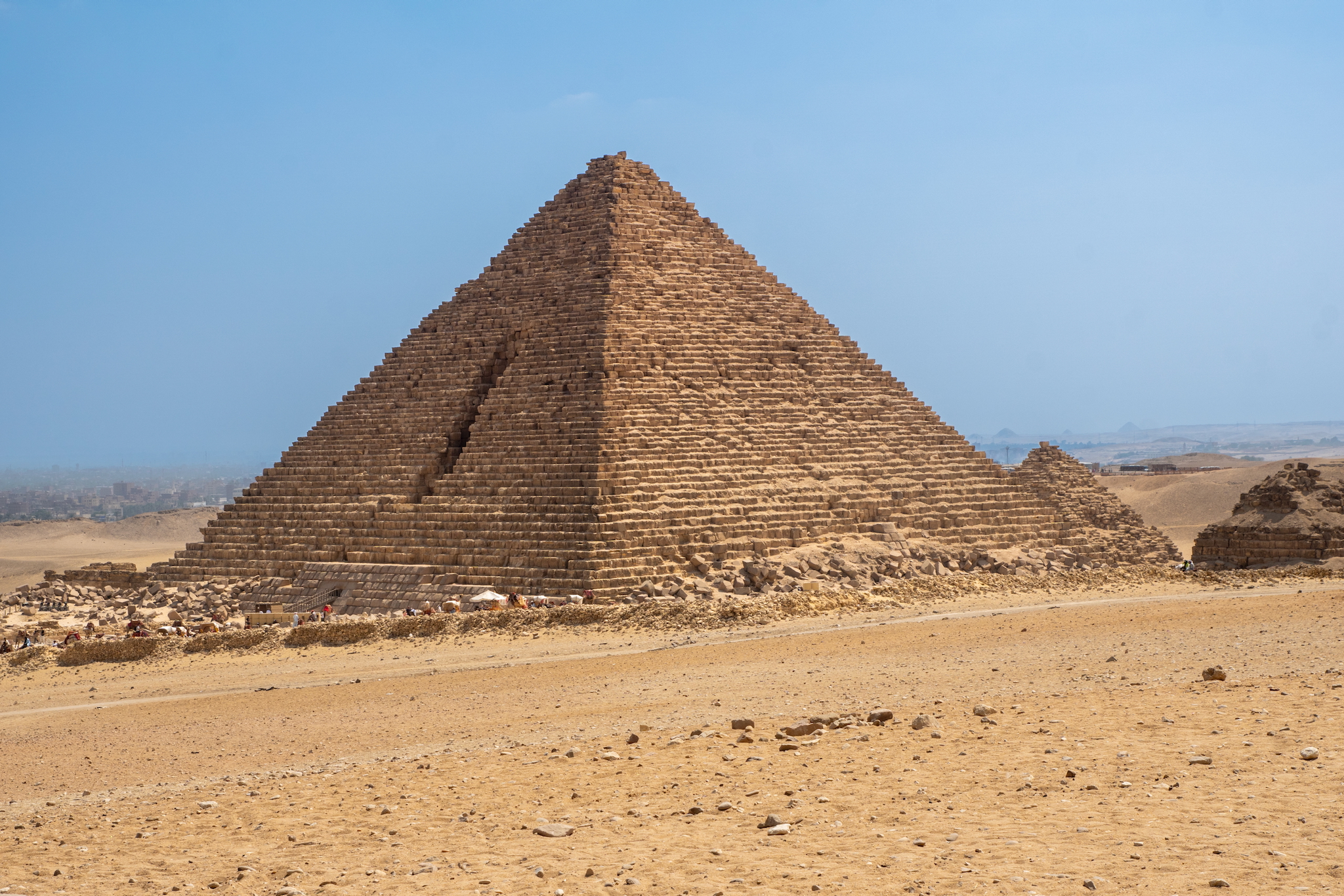
What left us speechless, however, was the sight of the three huge pyramids together. This moment when you stand in front of these colossal buildings is indescribable. Below the Pyramid of Khafre lies the famous Sphinx. We had often heard that it was smaller than expected – and yes, it was actually even smaller than we thought. But it is still an iconic motif and fits perfectly into the overall picture of this wonder of the world.
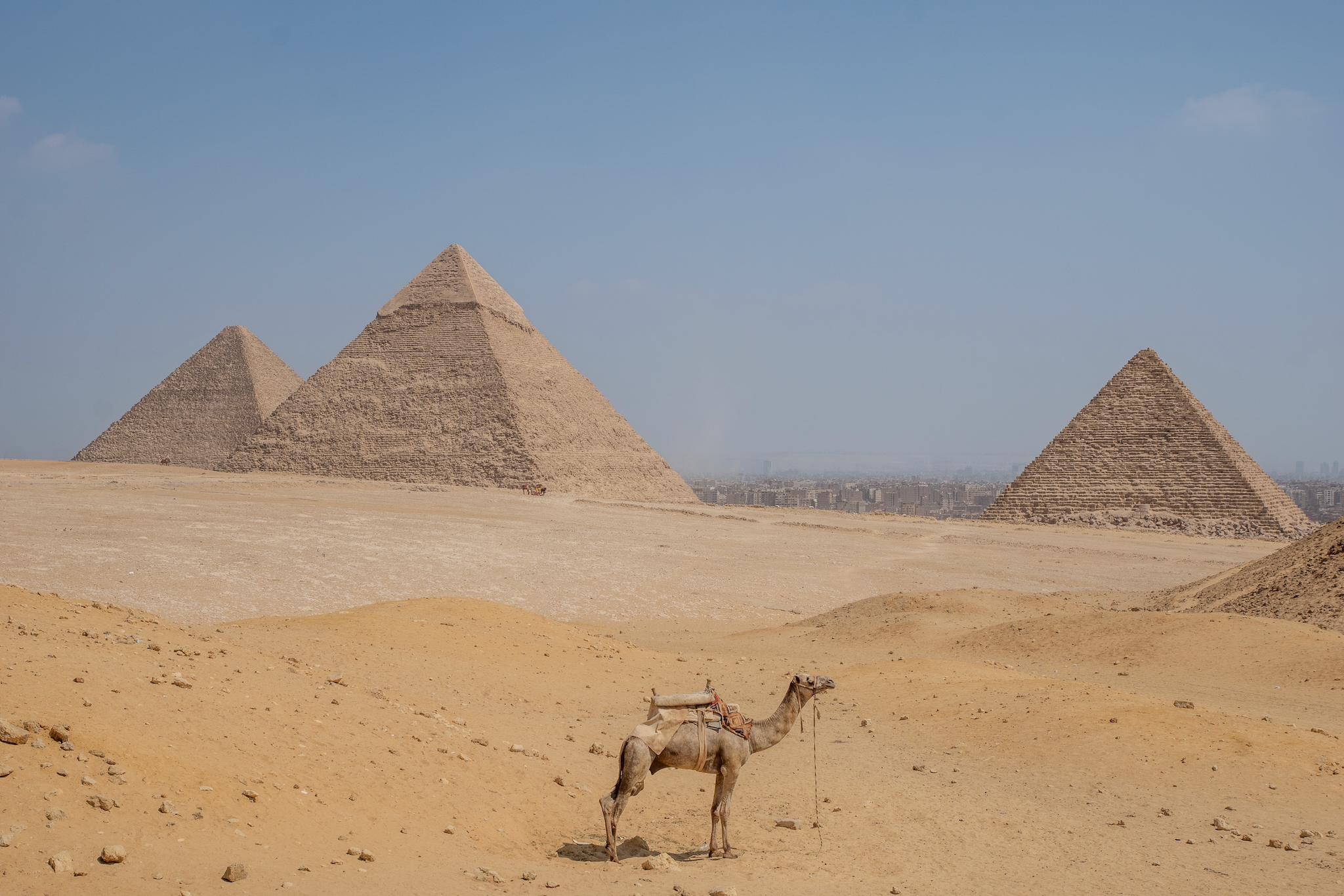
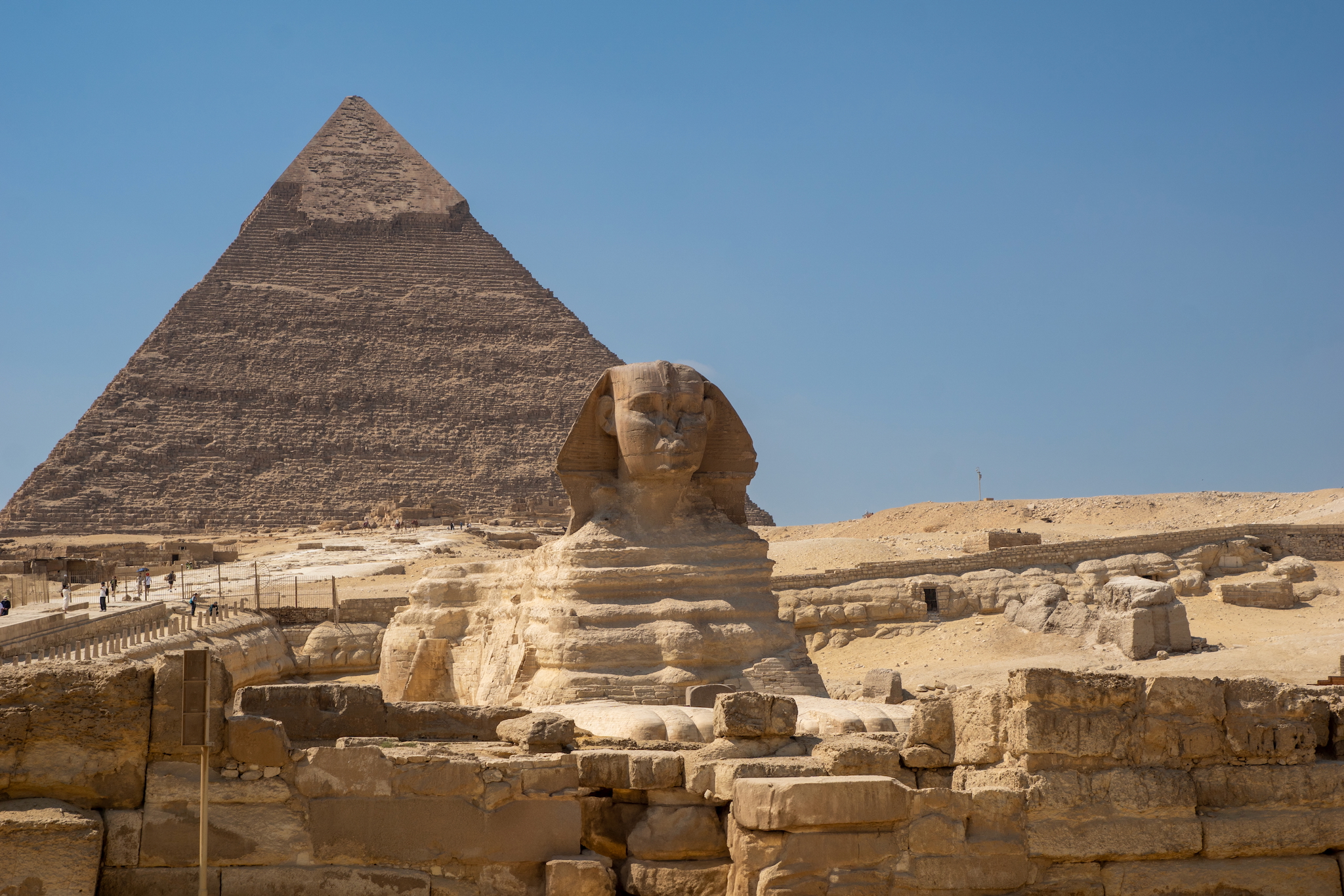
For us, visiting the Pyramids of Giza was an incredible experience that we can recommend to everyone. It is definitely worth seeing this wonder of the world for yourself!
We find the entrance fees relatively high. Admission to the site costs EGP 700 (approx. EUR 12.80) per person. Children 350 EGP (approx. 6.40 EUR). If you arrive by car, you pay the price for a parking ticket 25 EGP (approx. 0.50 EUR). The driver can drive his car through the entrance gate and will be checked there. All occupants must get out and go through a separate control at the entrance area. Here you are checked in a similar way to at the airport.
Pyramids of Saqqara
After our impressive experience at the Pyramids of Giza, we looked for a less crowded alternative and decided on the Pyramids of Saqqara. In contrast to Giza, this area was much quieter, and we were hardly approached by merchants or self-appointed guides. Nevertheless, we were persuaded by a local tour guide who offered to show us the grounds. In retrospect, this was an excellent decision, because without him we would have overlooked many fascinating details.
A highlight of our visit was the Imhotep Museum. Despite its manageable size, it impressed us with an excellently prepared exhibition. Particularly noteworthy was the presentation of the oldest known mummy.
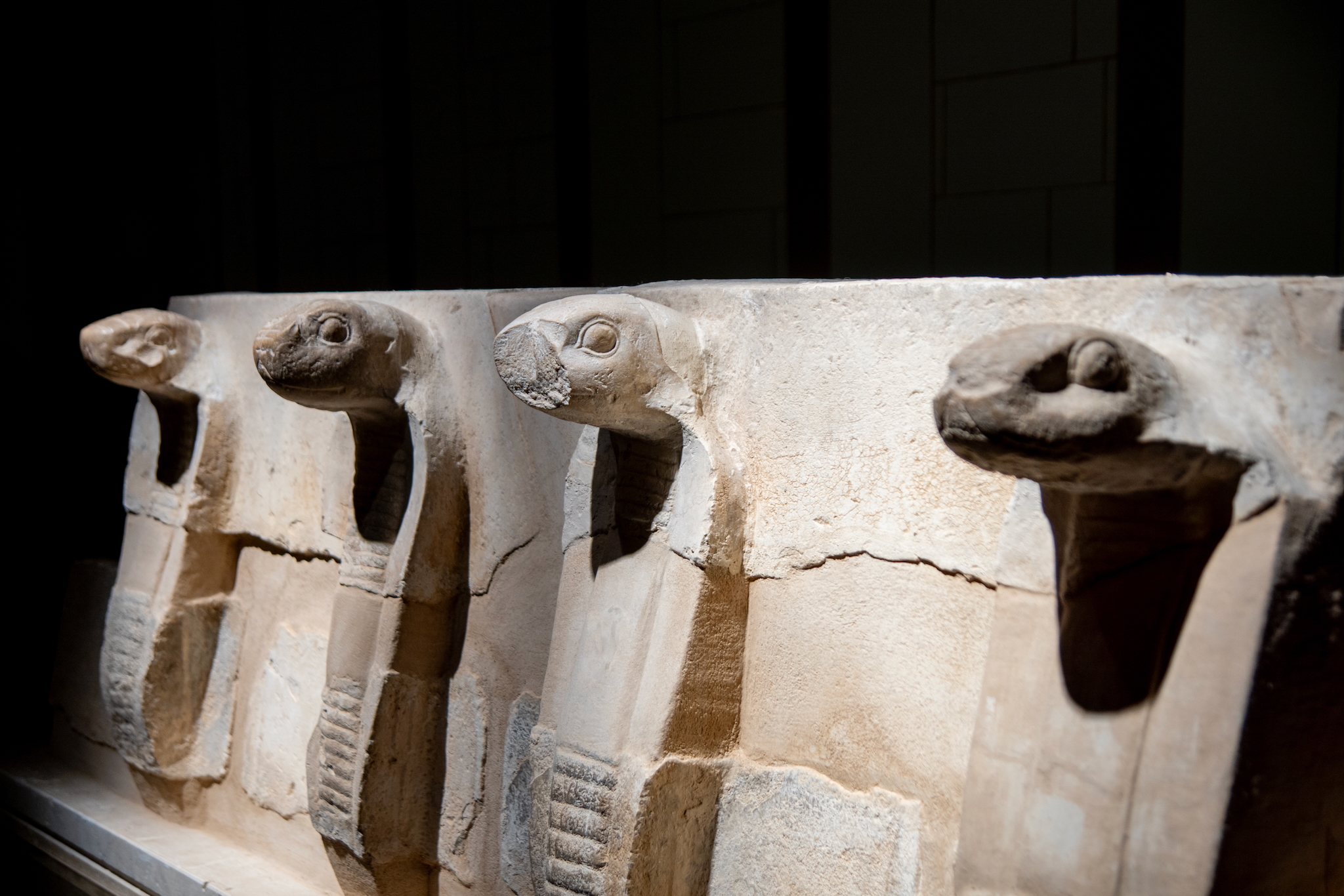
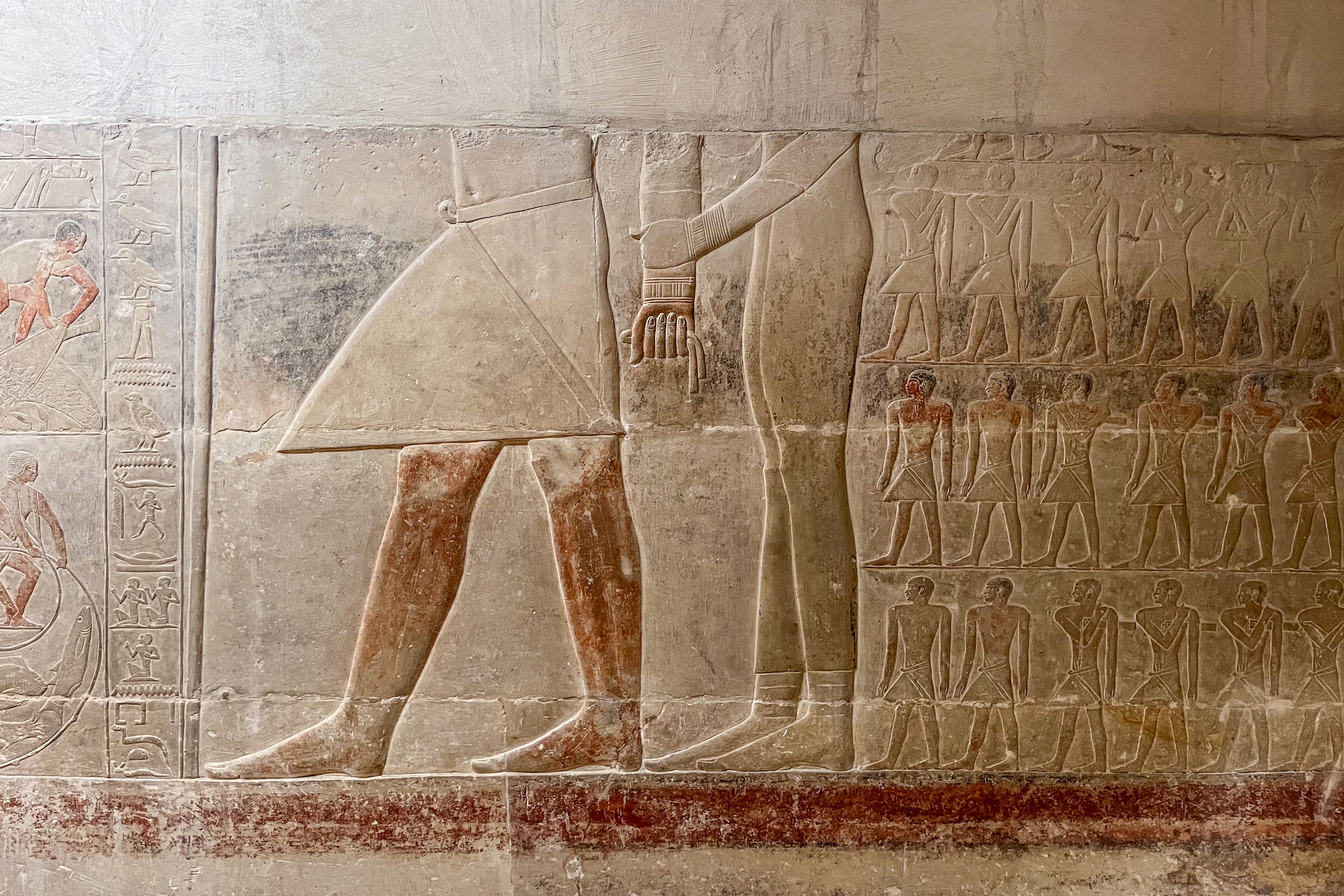
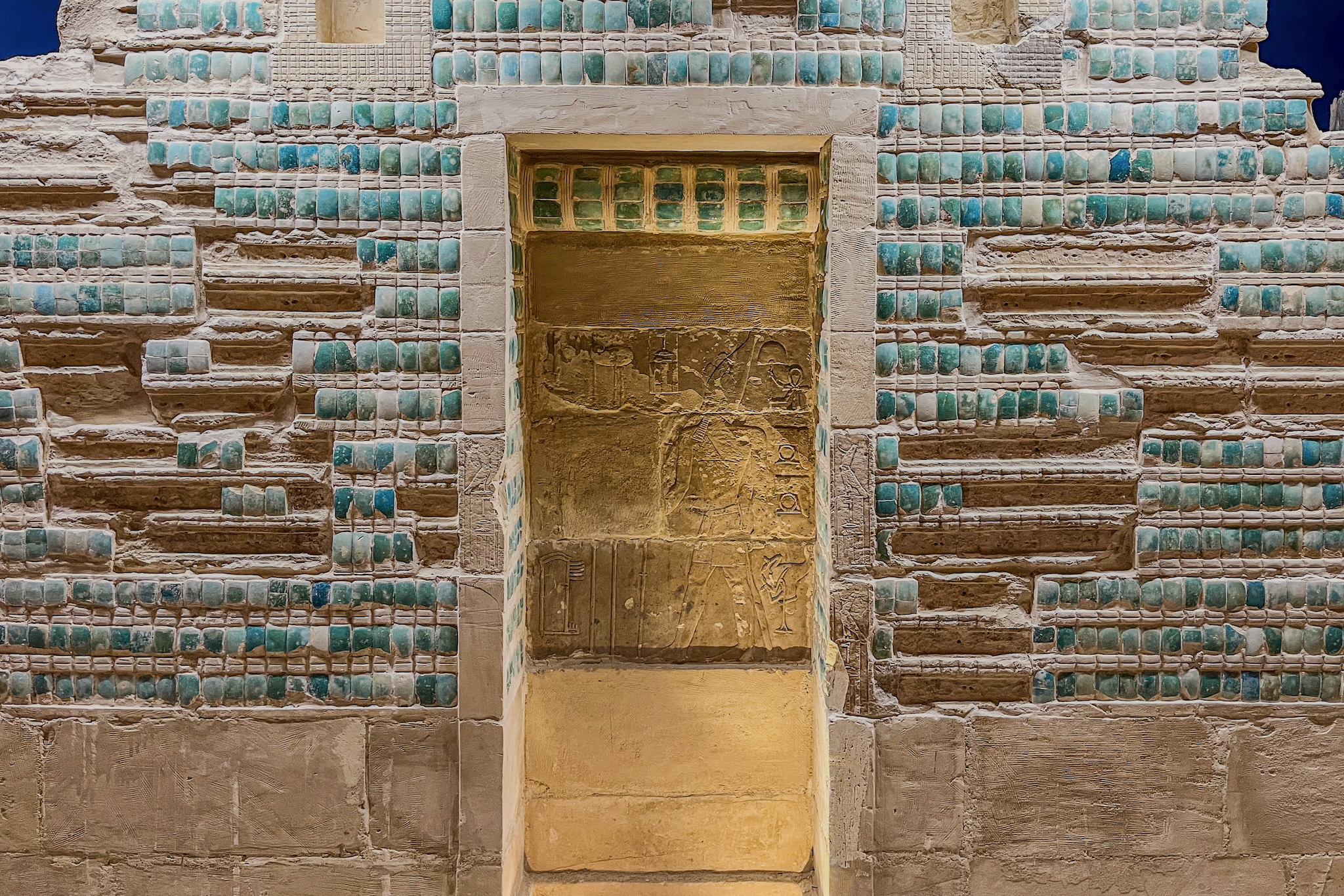
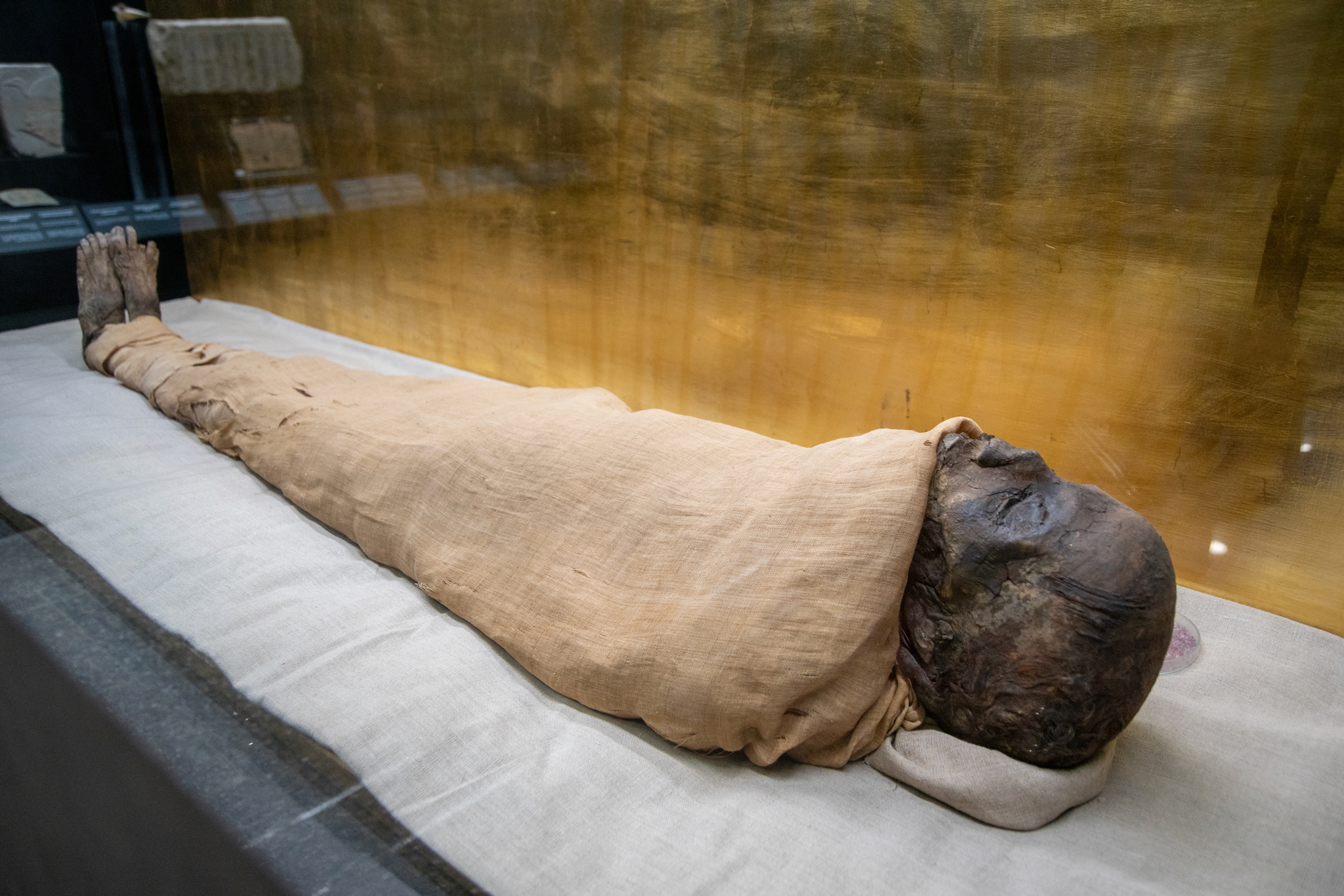
The centerpiece of Saqqara is the famous Step Pyramid of Pharaoh Djoser, which is considered the oldest pyramid in Egypt and is over 4,700 years old. Its construction differs significantly from the smooth pyramids in Giza, as it consists of several steps on top of each other. The entrance to the interior cost extra, but apart from a few corridors and chambers, there was not much to see. A beautiful colonnade leads to the step pyramid, which leads to a large square. It is surrounded by old buildings and temples, where people prepared for big games that took place in front of the pyramid.
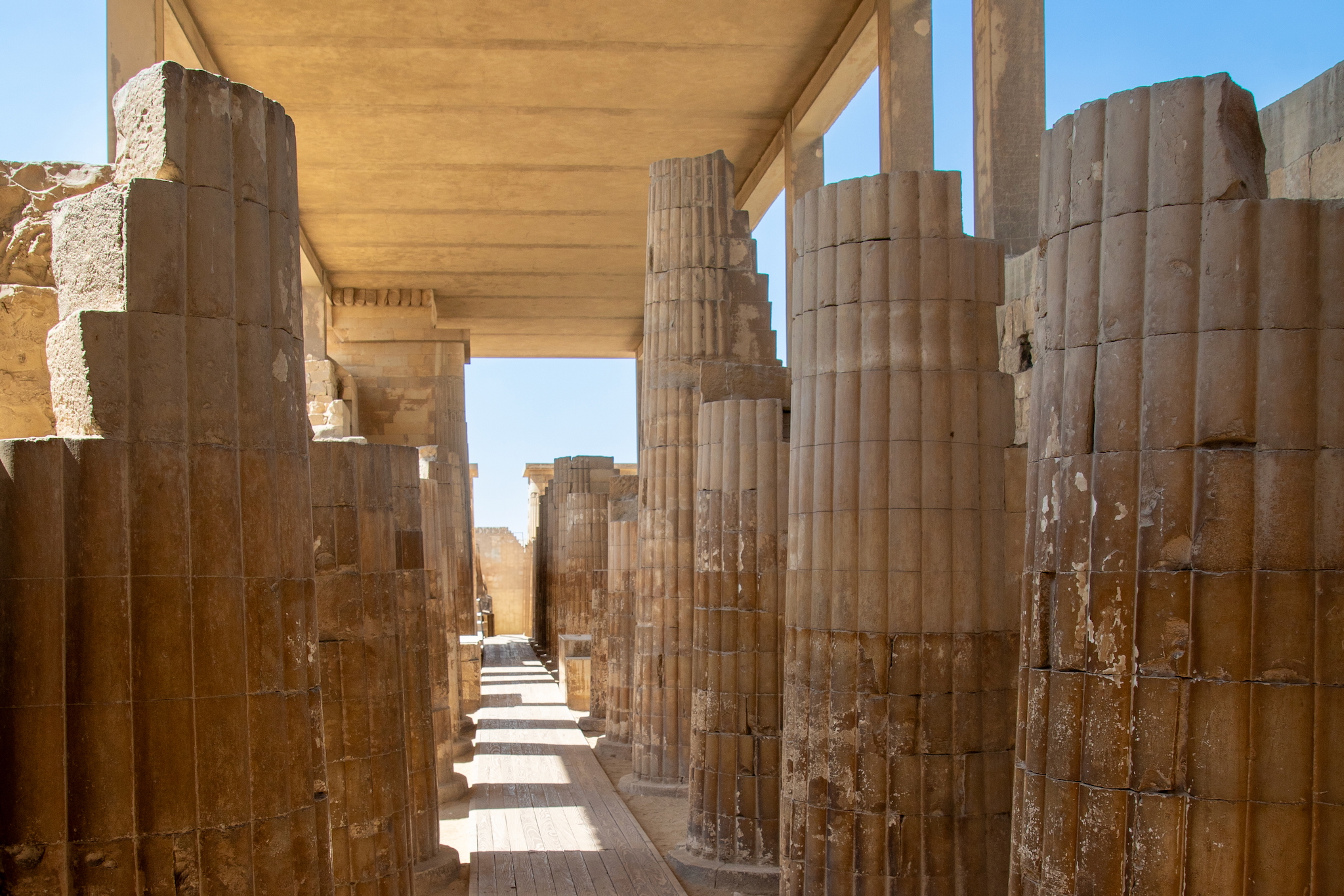
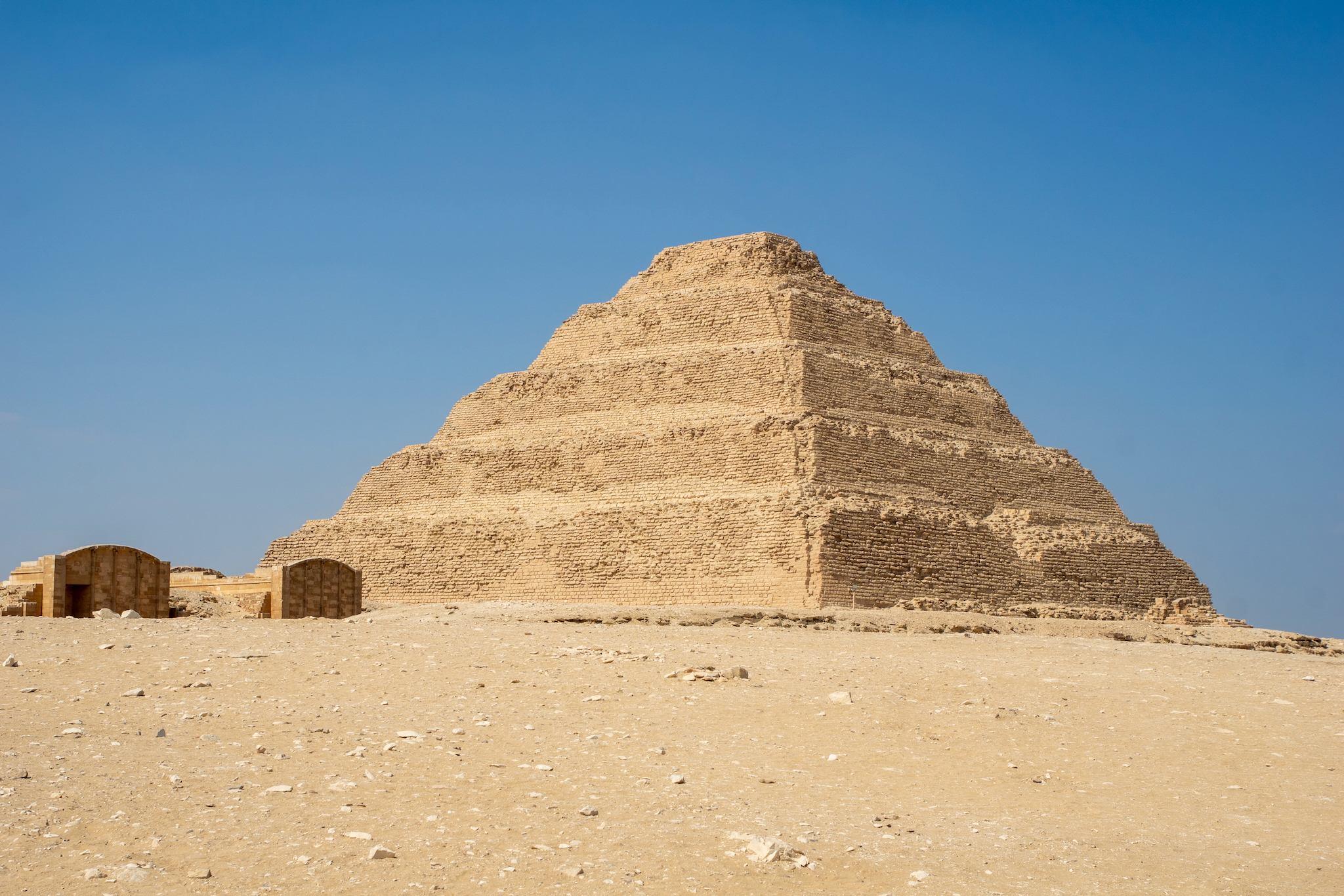
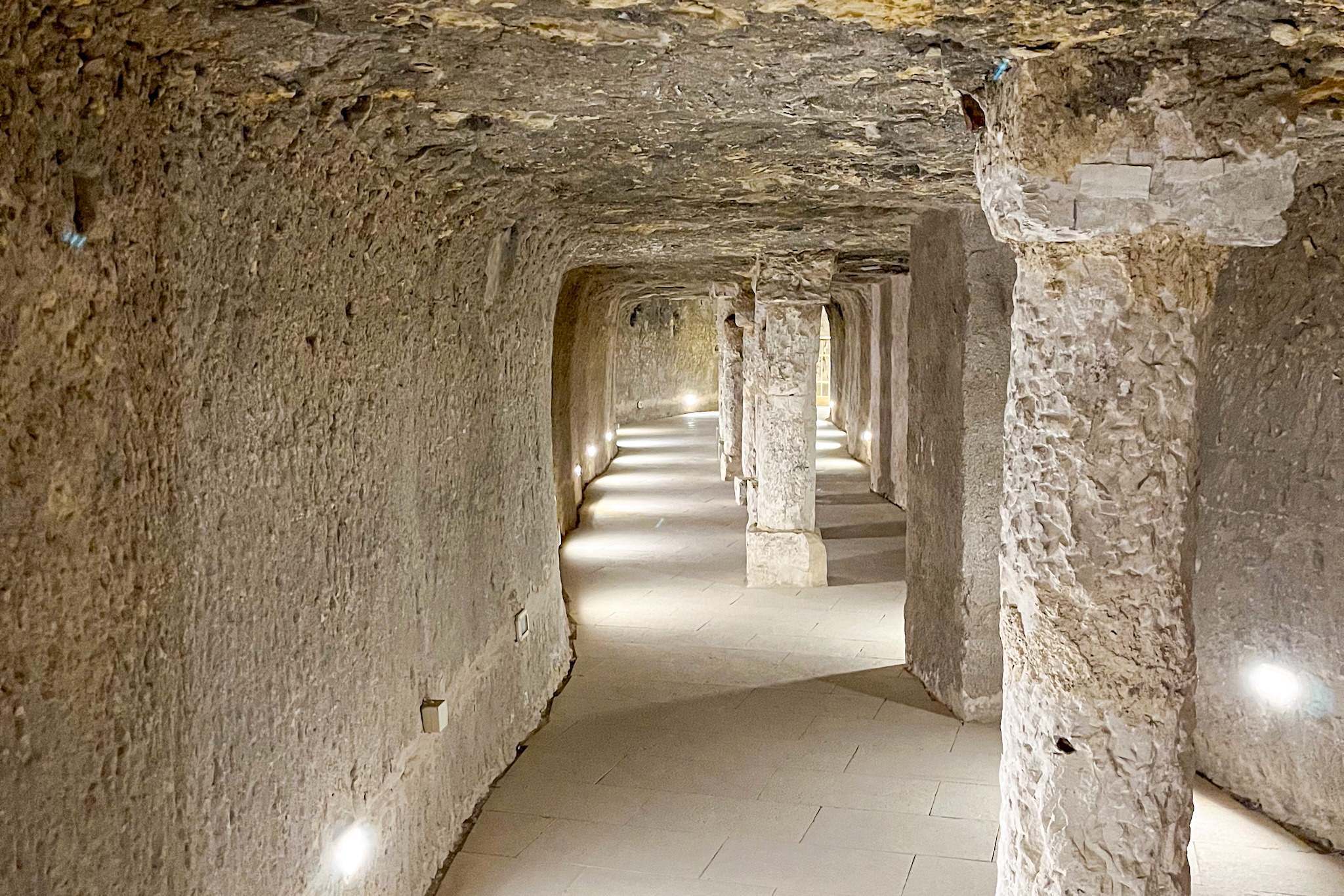
We found the surrounding temples and burial chambers on the grounds particularly worth seeing, which also required an additional entrance fee. The ornate reliefs and architecture of these complexes gave us a vivid picture of ancient Egyptian culture and history.
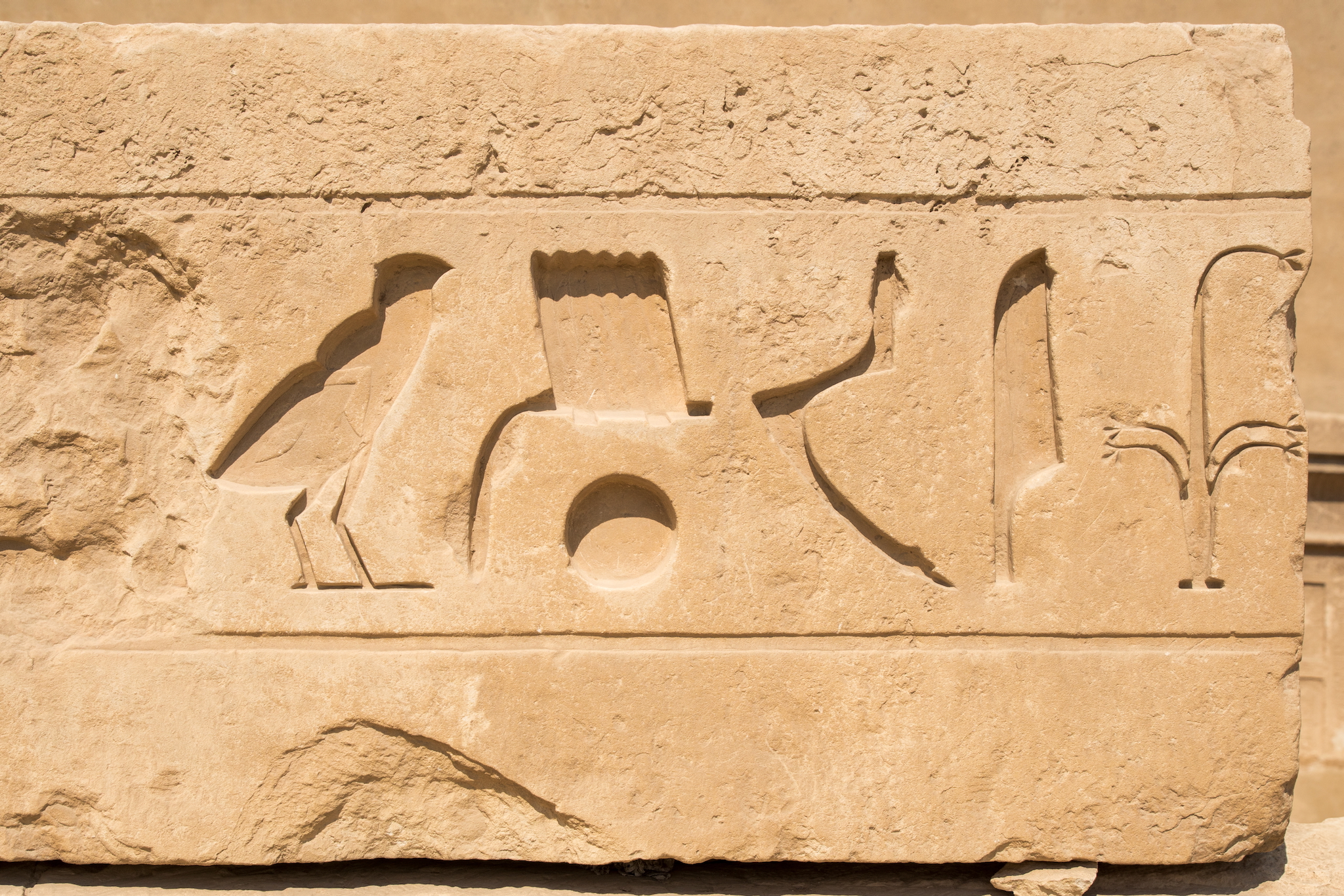
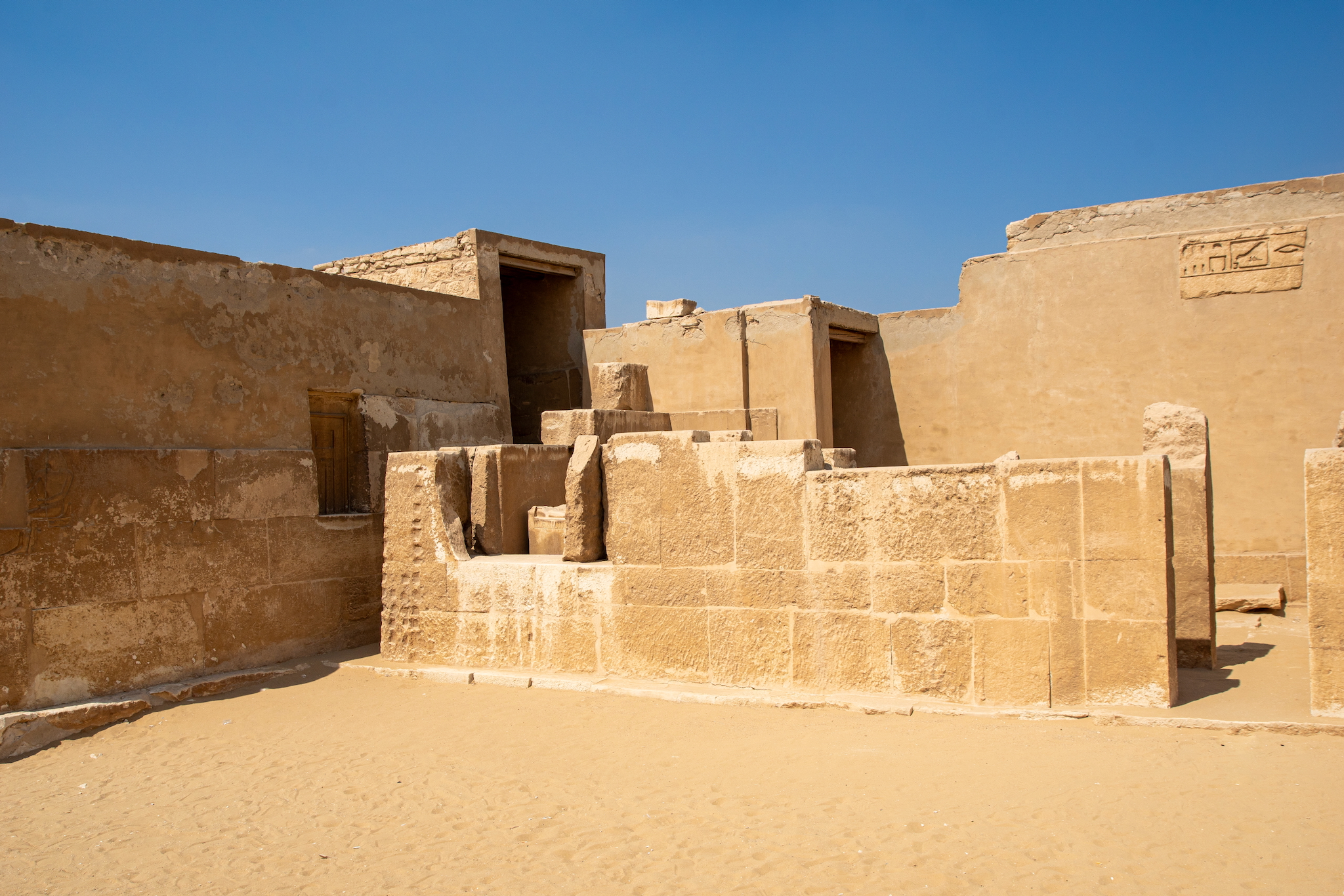
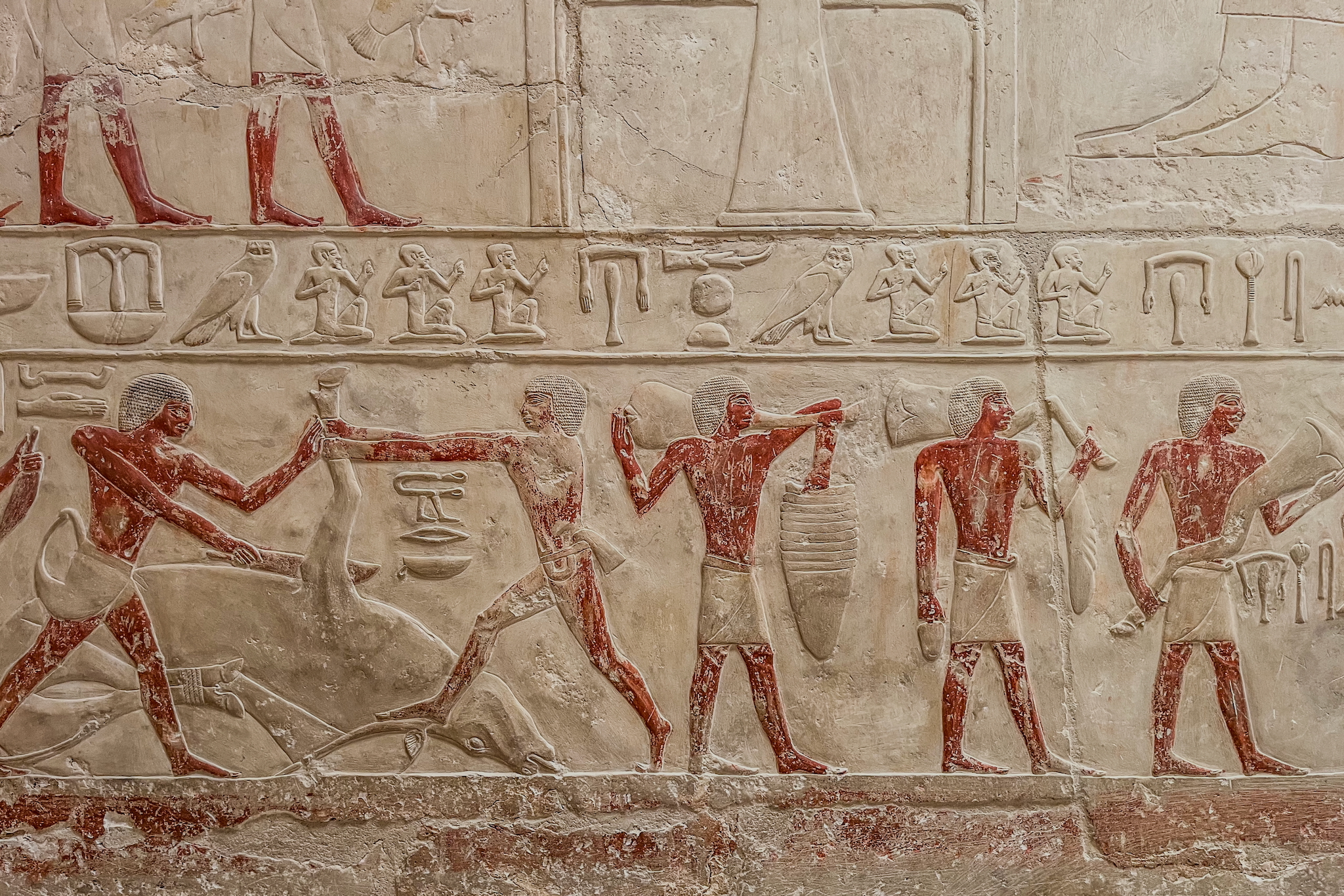
The visit to the pyramids of Saqqara was an enriching experience away from the tourist crowds, which we can recommend to every Egypt traveler.
The entrance fees for Saqqara were cheaper than in Giza, we paid 600 EGP (about 11.00 EUR) for the adult and 300 EGP (about 5.50 EUR) for a child. The rental car cost 25 EGP (about 0.50 EUR) extra.
Red Pyramid and Bend Pyramid
After our visits to the famous pyramids of Giza and Saqqara, we went to Dahshur to explore the less frequented but equally impressive structures of the Pyramid of the Bend and the Red Pyramid. The journey turned out to be adventurous: Our route took us through narrow villages and over roads in poor condition, which underlined the authentic charm of rural Egypt. The direct access to the site also looked more like a checkpoint than a museum entrance. You simply have to get involved with these circumstances, even if it may seem very unusual for us Europeans.
Our first stop was the Red Pyramid, the largest of the pyramids in Dahshur. It got its name from the reddish limestone that makes up its core. Access to the pyramid required a steep climb along the outer façade to the entrance. Once inside, numerous narrow and steep steps led us down into the burial chambers. The air was stuffy and the temperatures higher than in the pyramids we had previously visited, making the descent a physical challenge. Nevertheless, it was an impressive experience to explore the inner structure of this ancient burial site.
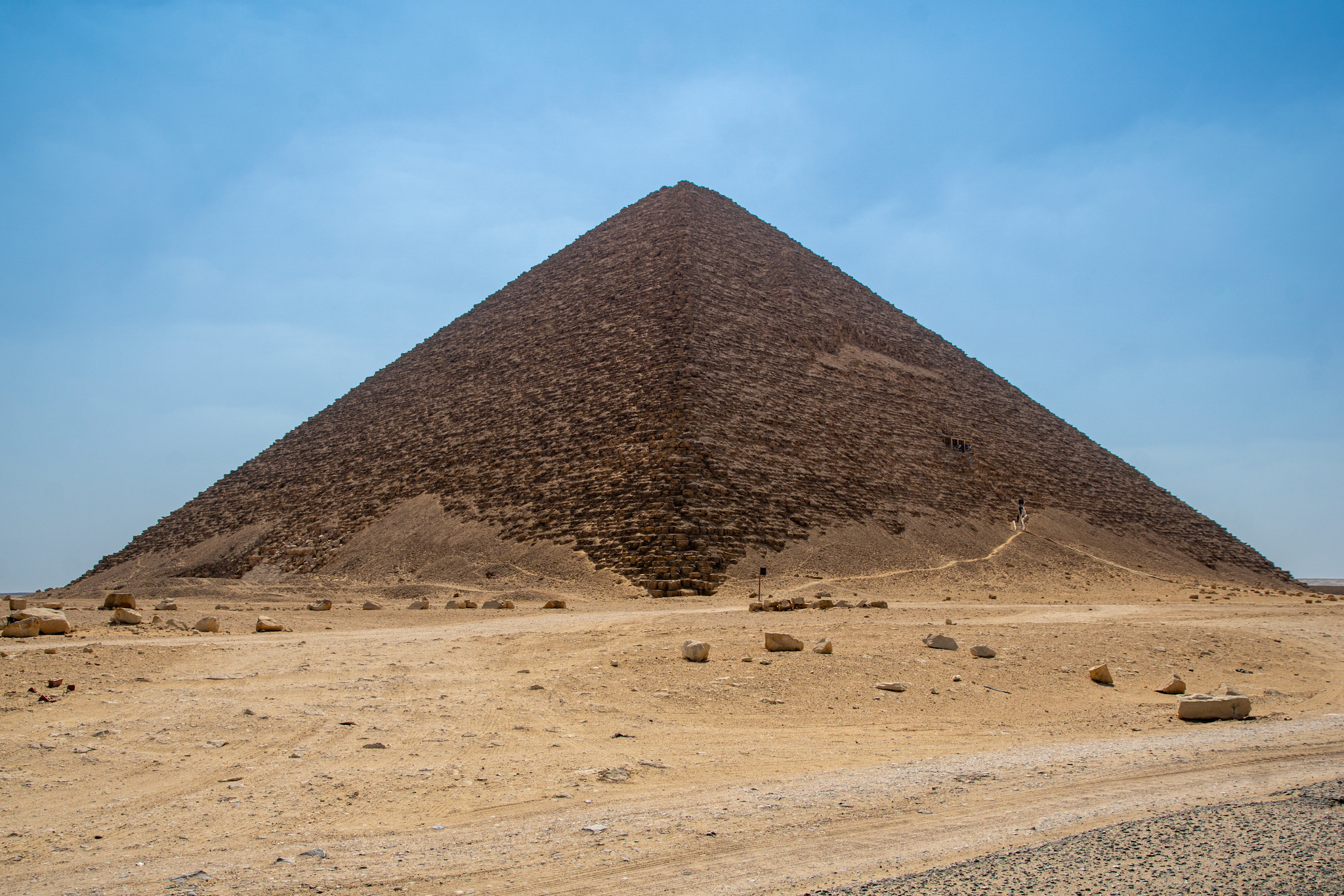
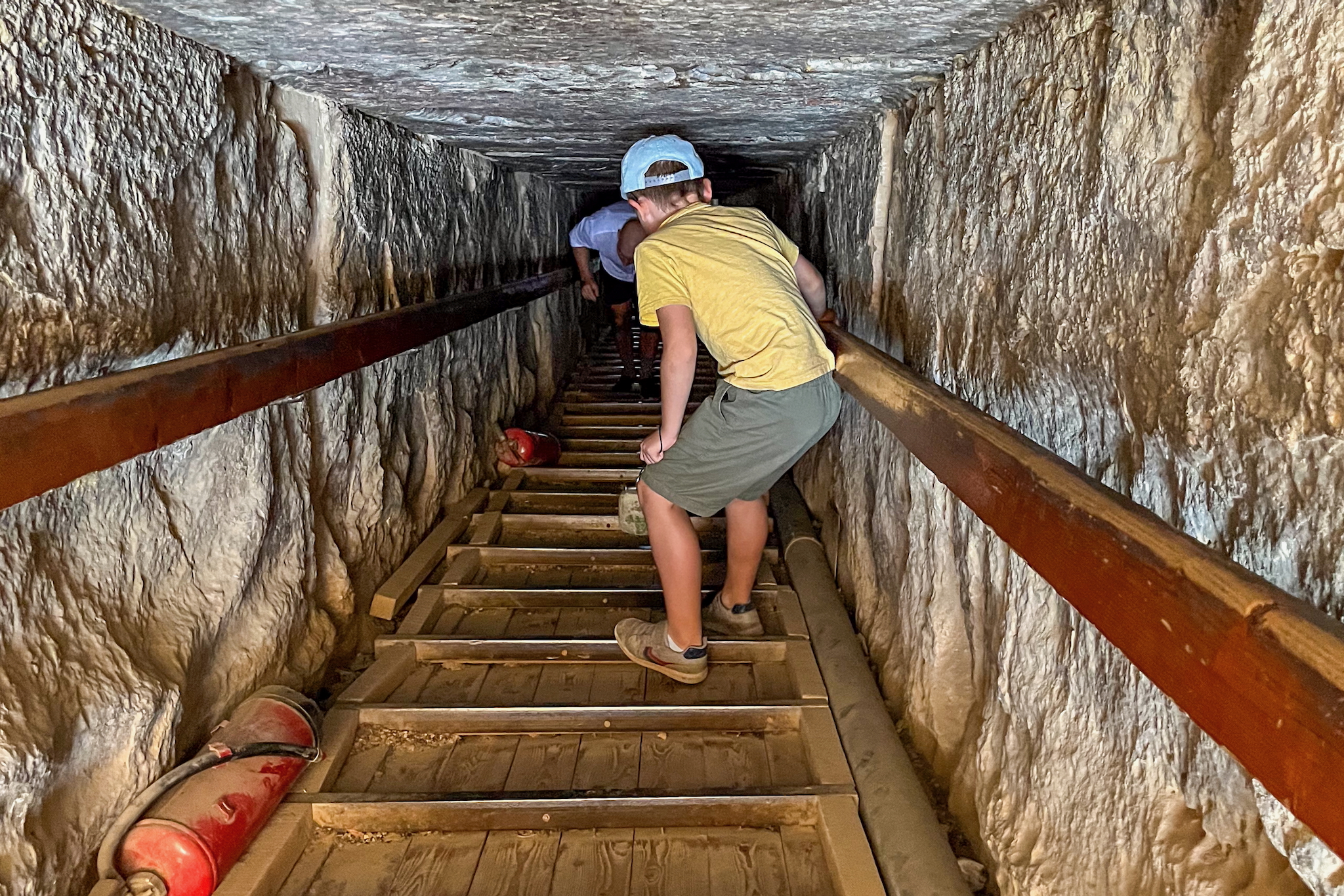
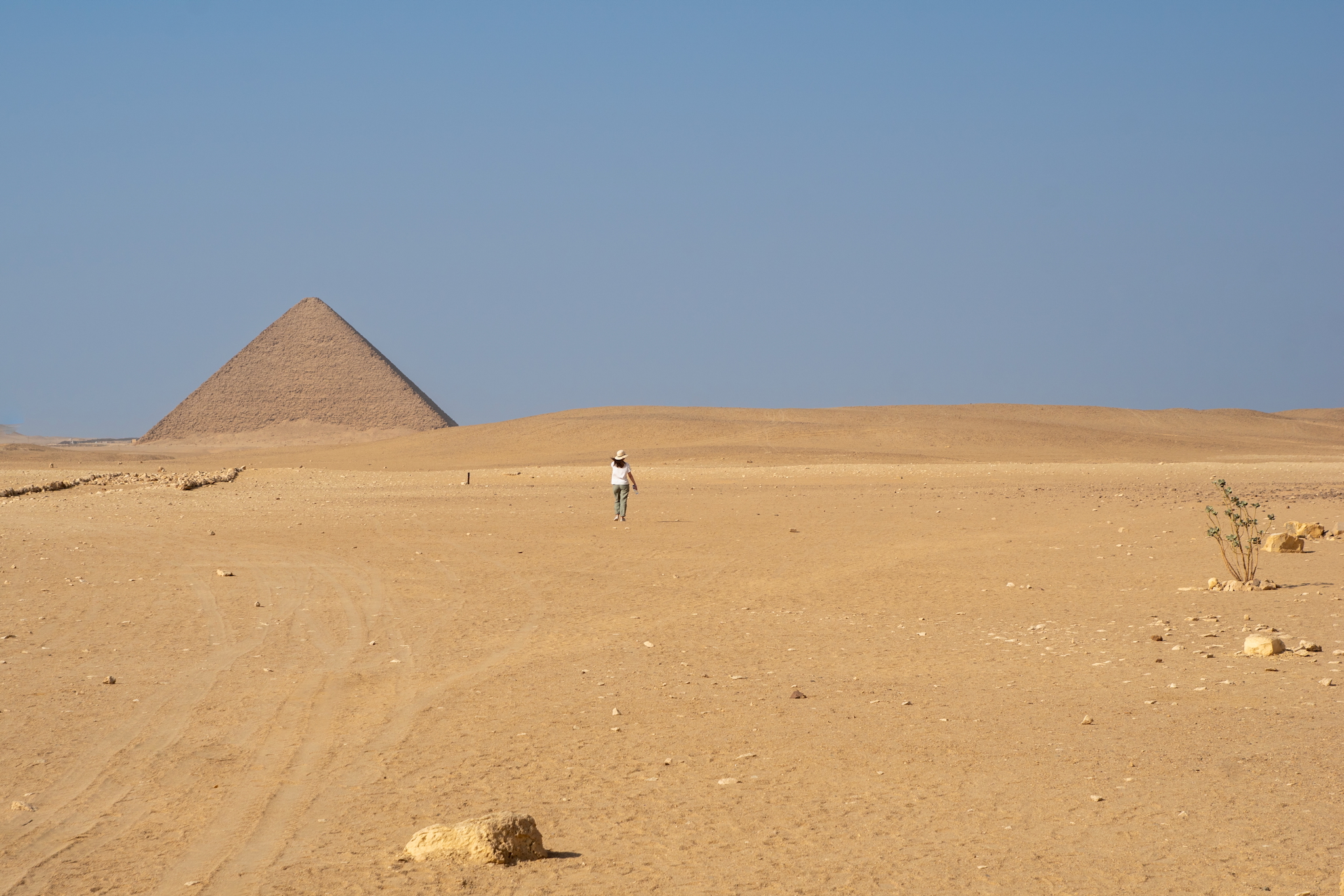
Afterwards we wanted to visit the bending pyramid, which stands out because of its unique bend in the structure. This results from a construction change during construction, in which the angle of inclination was adjusted, presumably to ensure stability. Notably, this pyramid still retains parts of its original limestone exterior cladding, which gives an idea of what the pyramids might have once looked like. Unfortunately, a tour bus full of tourists arrived at the same time, so we decided not to enter the inside of the bending pyramid and instead enjoy the impressive exterior view.
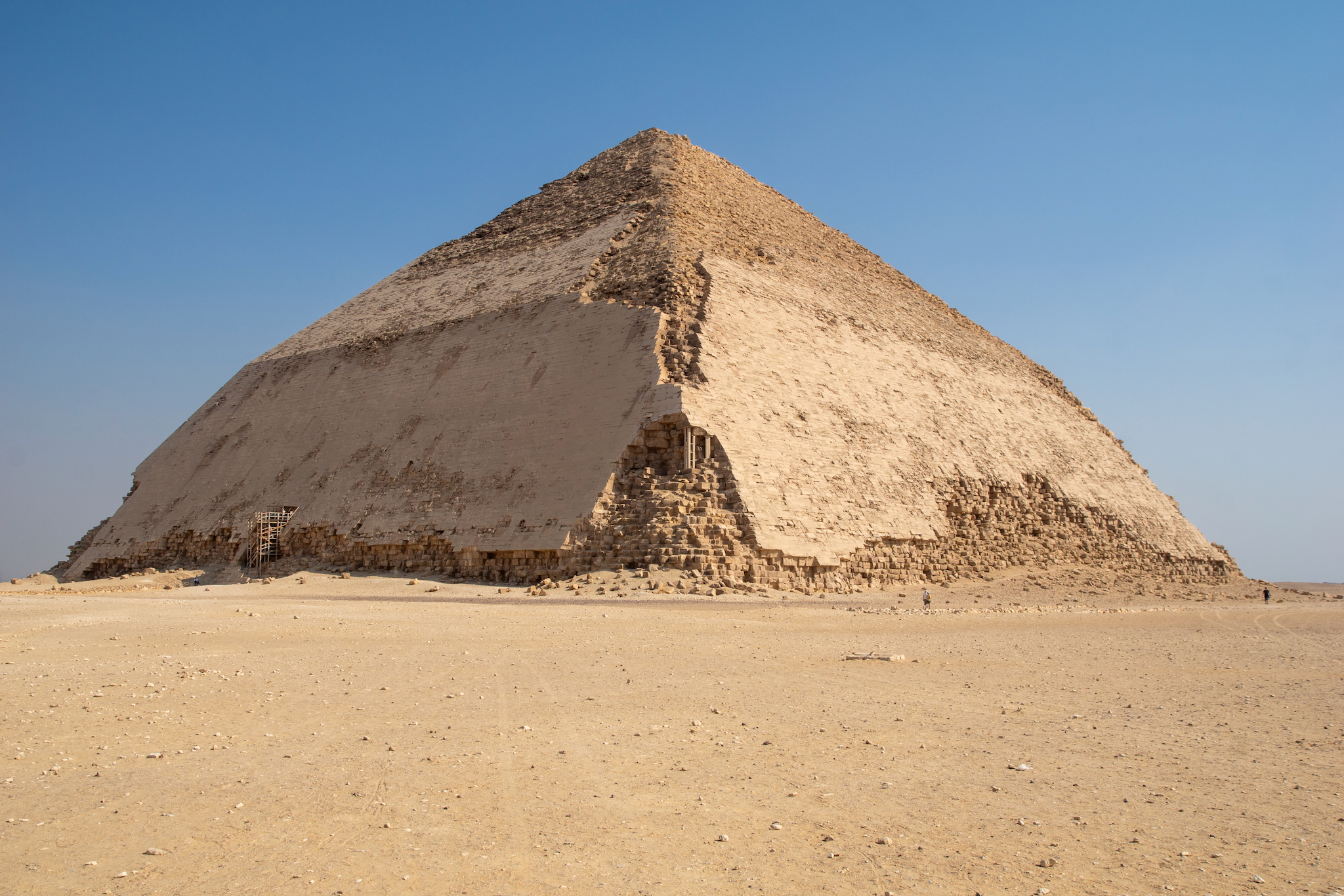
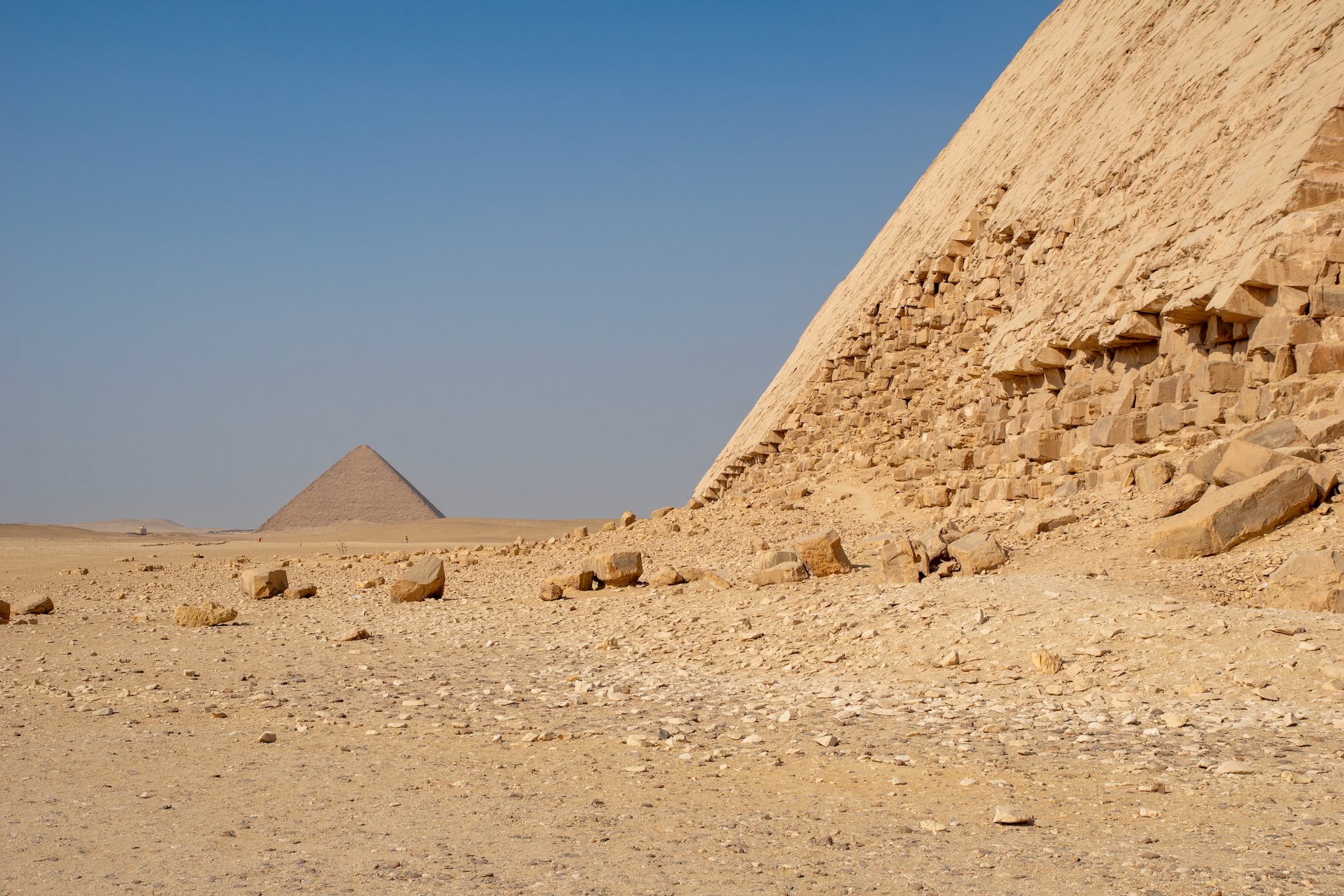
Our trip to Dahshur offered us fascinating insights into the diversity of Egyptian pyramid architecture off the beaten track. The combination of adventurous journey, impressive buildings and the tranquility of the place made this day an unforgettable experience.
In Dahshur, we paid the lowest entrance fees: 200 EGP (approx. 3.70 EUR) for the adult and 100 EGP (approx. 1.80 EUR) for a child. The rental car cost nothing extra this time.
Ancient Egyptian Museum
Our visit to the Egyptian Museum in Cairo was an impressive experience. Although we arrived at a time when several coaches drove up, we hardly had to queue to buy the tickets. The security checks were thorough: both when entering the museum grounds and at the entrance to the building, our bags were checked and we passed scanners.
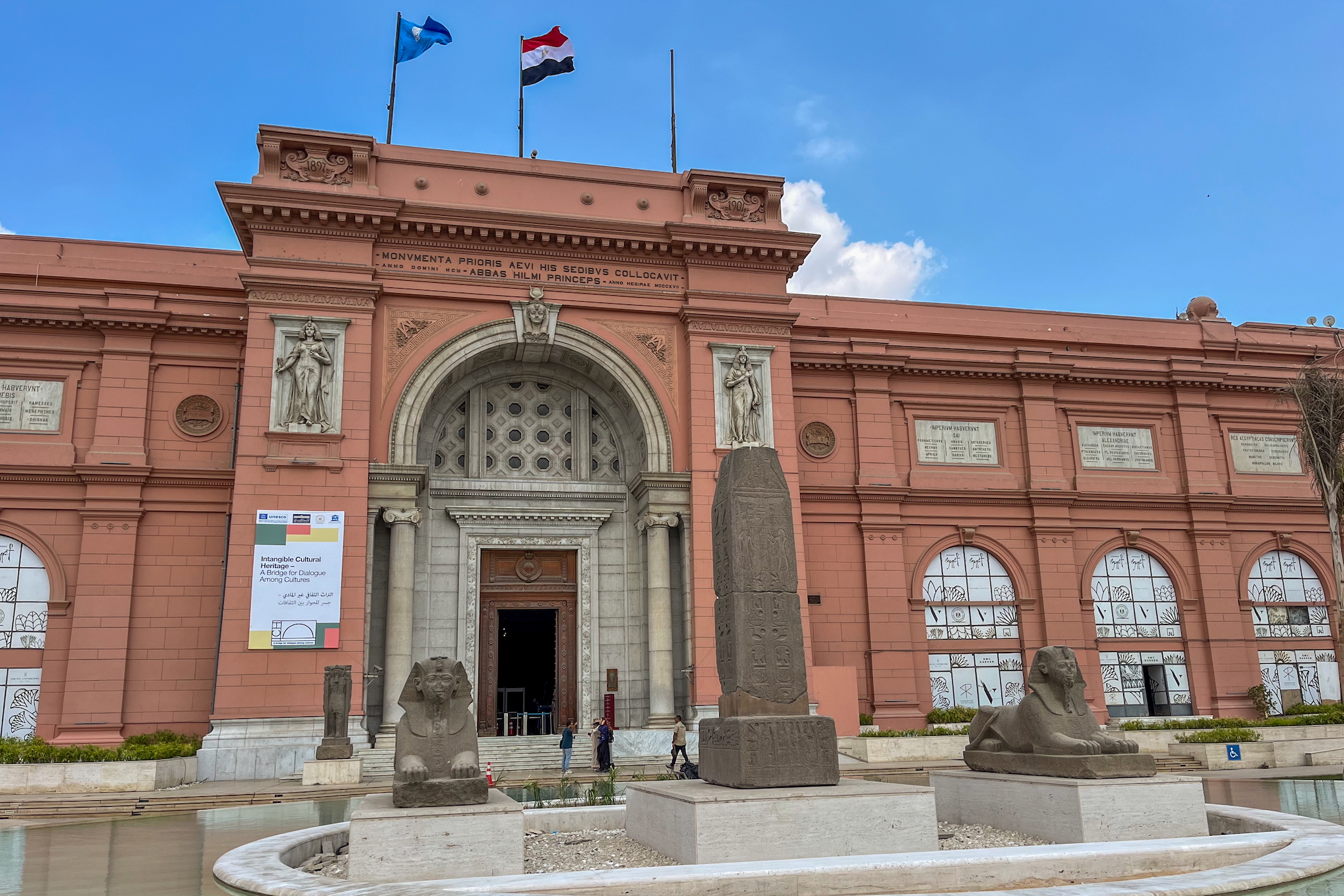
The museum building itself, opened in 1902, exudes a historic charm with its neoclassical architecture. Nevertheless, the presentation of the exhibits seemed partly improvised; many exhibits seemed to be simply placed in the corridors, often only with small labels. Nevertheless, the artefacts on display were extremely fascinating: from impressive statues to ornate stone doors to old burial chamber stones and filigree wooden figures.
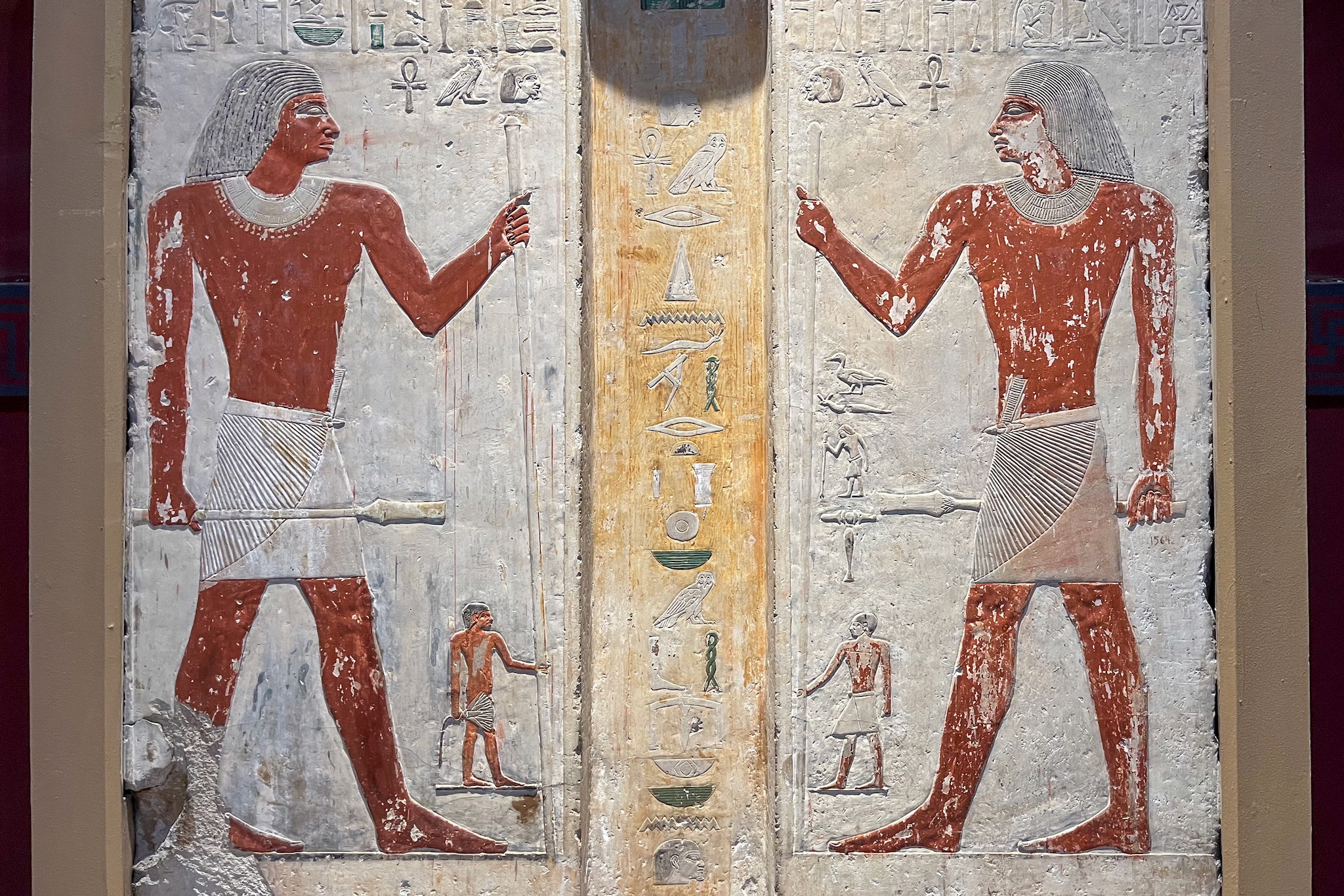
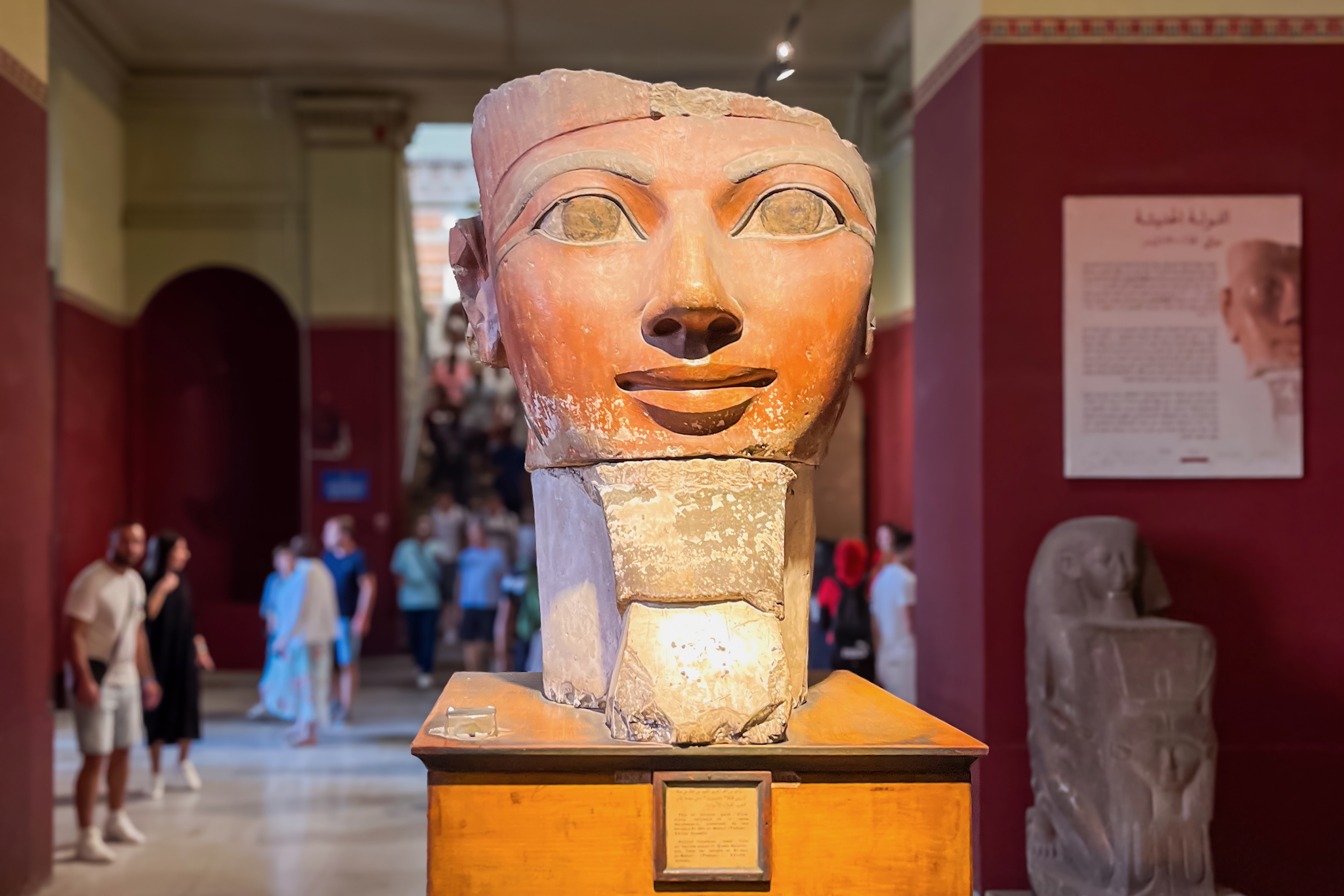
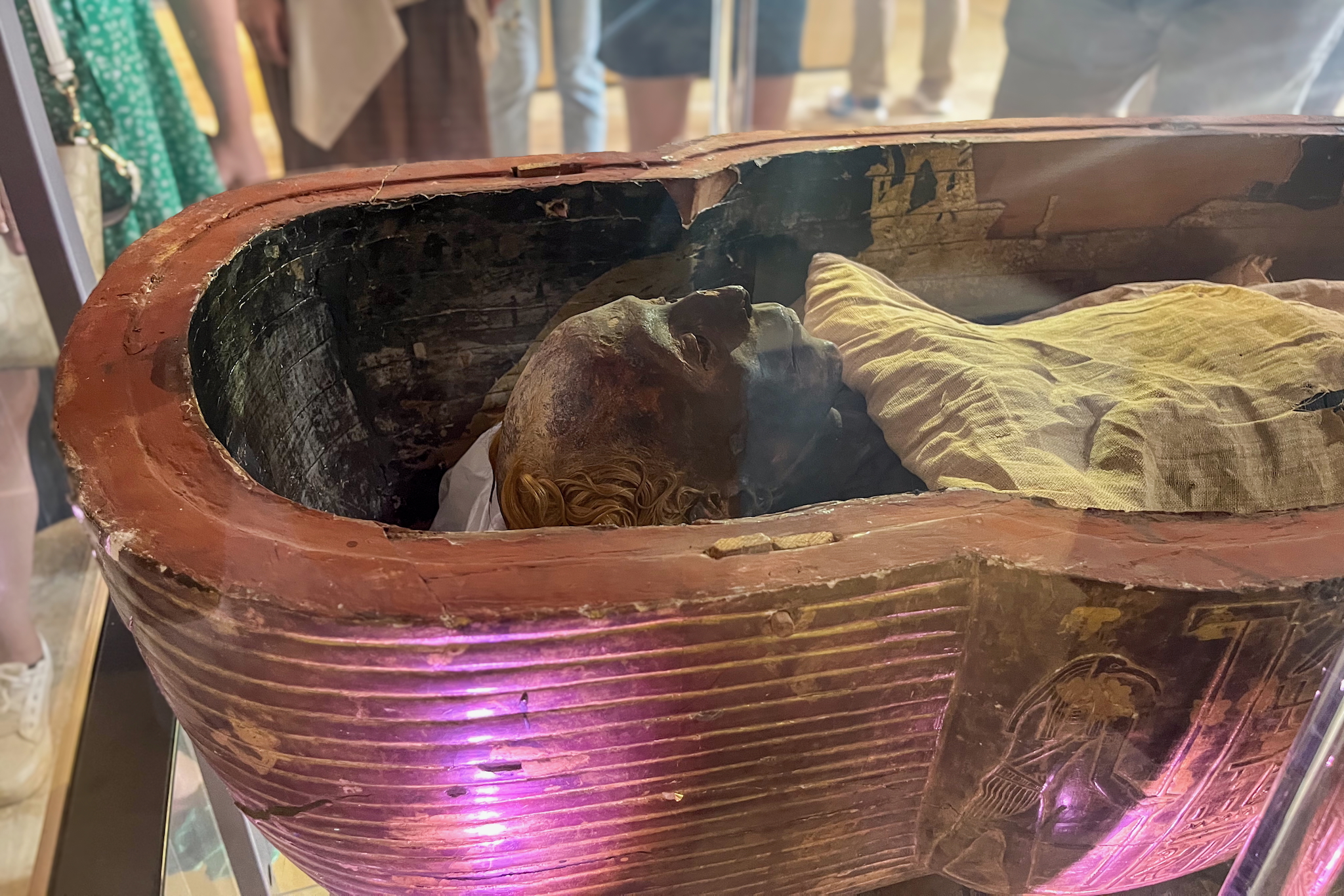
On the upper floor, a special highlight awaited us: the mummies and sarcophagi, which offered a deep insight into the burial rituals of ancient Egypt. However, some displays and showcases were empty, as many exhibits are already exhibited in the newly built museum at the Pyramids of Giza. An absolute must was the special exhibition on Tutankhamun, which was accessible at no additional cost. Here we admired the world-famous golden death mask of the young pharaoh – a sight that left us speechless and which we can warmly recommend to every visitor.
For an adult we paid 550 EGP (approx. 10.00 EUR) and 275 EGP (approx. 5.00 EUR) for a child.
Did you like the post? Then share it on the social networks! This way you support our work a lot. We are also happy about your opinion in the comments.

